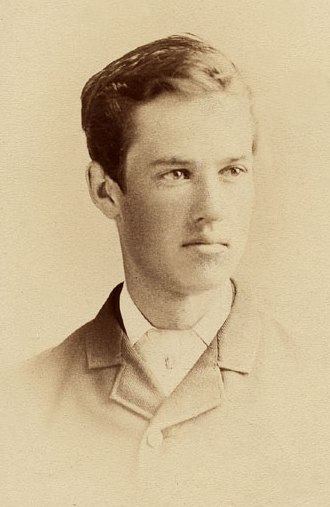Name Cyrus Dallin Role Sculptor | Education Academie Julian | |
 | ||
Died November 14, 1944, Arlington Heights, Massachusetts, United States | ||
Cyrus Edwin Dallin (November 22, 1861 – November 14, 1944) was an American sculptor best known for his depictions of Native American men. He created more than 260 works, including the equestrian statue of Paul Revere in Boston, Massachusetts; the Angel Moroni atop Salt Lake Temple in Salt Lake City, Utah; and his most famous work, Appeal to the Great Spirit, at the Museum of Fine Arts, Boston. He was also an Olympic archer.
Contents
Biography
Dallin, the son of Thomas and Jane (Hamer) Dallin, was born in Springville, Utah Territory, to a family then belonging to The Church of Jesus Christ of Latter-day Saints (LDS Church). At age 19, he moved to Boston to study sculpture with Truman Howe Bartlett. He studied in Paris, with Henri Chapu and at the Académie Julian.
In 1883, he entered the competition for an equestrian statue of Paul Revere for Boston, Massachusetts. He won the competition and received a contract, but four versions of his model were rejected. The fifth version was accepted in 1899, but fundraising problems delayed the project for decades. The full-size statue was unveiled in 1940.
Dallin converted to Unitarianism, and initially turned down the offer to sculpt the angel Moroni for the spire of the LDS Church's Salt Lake Temple. He later accepted the commission and, after finishing the statue said, "My angel Moroni brought me nearer to God than anything I ever did." His statue became a symbol for the LDS Church and was the model for other angel Moroni statues on the spires of LDS Church temples.
In Boston, Dallin became a colleague of Augustus St. Gaudens and a close friend of John Singer Sargent. He married Vittoria Colonna Murray in 1891, and returned to Utah to work on The Angel Moroni (1893). He taught for a year at the Drexel Institute in Philadelphia, Pennsylvania, while completing his Sir Isaac Newton (1895) for the Library of Congress. In 1897, he traveled to Paris, and studied with Jean Dampt. He entered a Don Quixote statuette in the Salon of 1897, and Medicine Man in the Salon of 1899 and the Exposition Universelle (1900). The couple moved to Arlington, Massachusetts in 1900, where they lived for the rest of their lives and raised three sons. From 1899 to 1941, he was a member of the faculty of Massachusetts Normal Art School (now the Massachusetts College of Art and Design). In 1912, he was elected into the National Academy of Design as an Associate member, and became a full Academician in 1930.
At the 1904 Summer Olympics in St. Louis, Missouri, Dallin competed in archery, winning the bronze medal in the team competition. He finished ninth in the Double American round and 12th in the Double York round.
Epic of the Indian
Dallin created a four-piece equestrian series called The Epic of the Indian, consisting of A Signal of Peace, or “the welcome” (1890); The Medicine Man, or “the warning” (1899); The Protest, or “the defiance” (1904); and Appeal to the Great Spirit (1909).
Appeal to the Great Spirit became an icon of American art, and is Dallin's most famous work. In 1929, a full-sized cast was dedicated and placed in Muncie, Indiana—at the intersection of Walnut and Granville Streets—and is considered by many Munsonians to be a symbol of their city. A 1923 one-third-size cast is in Oklahoma's Woodward Park (Tulsa), formerly a gift to Tulsa Central High in 1923. Stood in the main hall until 1976 when Central closed its doors, and at some later point Central donated to Woodward Park, at the intersection of 21st & Peoria Streets. Smaller versions of the work are in numerous American museums and the permanent collection of the White House.
Legacy
The Jefferson Cutter House in Arlington, Massachusetts is now a museum devoted to his works. A local elementary school is named in his honor. More than 30 examples of his work are on display at the Springville Museum of Art in his birthplace of Springville, Utah.
His papers are at the Smithsonian Archives of American Art.
The Dallin House at 253 S. 300 East in Springville, Utah and the Taylor-Dallin House in Arlington, Massachusetts are both listed on the National Register of Historic Places due to their association with Dallin.
